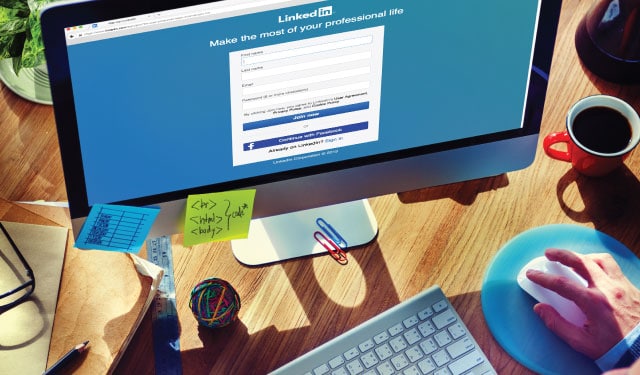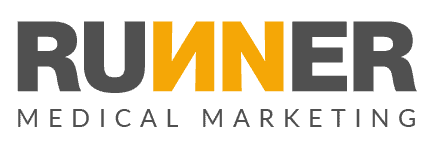
You likely know that LinkedIn is also one of the most widely misused connection tools. In fact, if you’re reading this article from LinkedIn, I invite you to tab back and glance at your “messaging” pane. You’ll likely see several obtrusive InMails vying for your attention. Does the thought of reading another InMail make you want to roll your eyes? So, can this be done well, and if so, how?
LinkedIn can be a powerful connection tool for business-to-business (B2B) companies. This is especially true for healthcare companies that sell to healthcare payers and providers.
There are two main areas of opportunity for healthcare marketing on Linkedin.
Ready to Grow?
1. Paid LinkedIn Advertising
LinkedIn offers advertising to generate leads, drive traffic to your website or landing page, and build brand awareness through a number of different ad formats, including sponsored content and sponsored messaging.
Simply put, Linkedin advertising allows you to guarantee getting a message in front of the healthcare decision makers you’re targeting, unlike organic (non-paid) Linkedin strategies.
2. Organic LinkedIn Outreach and Content.
LinkedIn offers multiple powerful organic opportunities including posting content, connecting with potential customers, sending InMails/Messages to prospects, and participating in groups. Organic (inbound) LinkedIn tactics can help your brand get discovered by prospects that are already “pre-sold” on your product or service.
This sounds like a smorgasbord of opportunity, right?
Well, you’re not wrong but it is important to note that LinkedIn is one of the more expensive social channels for paid advertising. It can be easy to burn through your advertising budget quickly, with little to show for it. Furthermore, the sales cycle for a B2B healthcare company tends to belong. Remember that while both paid and organic strategies on LinkedIn can generate qualified leads but should be considered a “long-term play” for B2B healthcare businesses.
Even with the above considerations, the return on investment for B2B healthcare companies can be very high, and it is well worth the effort to create a well-thought-out LinkedIn strategy.
(Or you can hire us to do it for you!).
These 3 tactics will help your B2B healthcare company win on LinkedIn.
Healthcare Marketing on Linkedin Starts with a Well-Defined Audience
When starting to think about LinkedIn healthcare advertising, the first conversation you have should be creating a clearly defined target audience.
Who do you want to see in your ads? (Hint: the answer is not “everyone”). Like Facebook, LinkedIn collects data that creates significant opportunities to target your ads. You can check out the vast targeting options for LinkedIn advertising here.
When it comes to healthcare marketing on LinkedIn, there are a few demographic targeting areas that you can focus on to make the most of your budget.
Company Industry
LinkedIn ad targeting by industry can get more specific than just medical and healthcare. In fact, you can target many sub-verticals inside of healthcare.
Here are a few examples:
- Biotechnology
- Hospital & Healthcare
- Medical Practice
- Health, Wellness, and Fitness
- Mental Health Care
- Pharmaceuticals
Job Title Targeting
Let’s say your medical device company makes ventilators for hospital systems. You can target your ads to show up only for hospital administrators. Make sure you include all the potential job title variations that are important, and that the title reflects your true ideal target. Job title targeting often needs to be combined with another form of targeting, such as company, to make sure it hits the right target.
We recommend doing initial testing in the Linkedin Ads platform to understand what title options are available.
Seniority
Take a look at your existing customers and determine what seniority level most or all decision-makers are. Who is able to actually sign on that dotted line? If 80% of the decision-makers in your customer base are directions, senior directors, and vice presidents, target your LinkedIn ads so to specifically serve your ads to users who fit this seniority level. Options include:
- Owner
- Partner
- Director
- Manager
- Entry-Level
Company Targeting
You can run account-based marketing campaigns on LinkedIn by targeting only those people currently employed at a target list of companies.
You will need to add some job title or seniority targeting here to get specific with the department you’re trying to reach inside the company. You could, for example, only target Revenue Cycle Management and IT decision-makers in a list of target companies.
Custom Audiences
More important than LinkedIn’s built-in targeting, however, is creating a custom audience. A custom audience is a list of contacts you upload to LinkedIn that is then “matched” so you only show ads to these individuals.
For example, if you wanted to reactivate a list of old prospects that had “gone cold,” you could import them into LinkedIn and show ads to only those folks. Or maybe you attended a trade show and received a list with only names and emails, but you only want to engage with decision-makers.
You could upload your trade show contact list to your LinkedIn Campaign Manager, then apply job title targeting to specifically show your ad to trade show attendees who are directors or higher within their organization. Custom audiences are a hallmark of “ABM” or Account-Based Marketing.
This simply means that rather than fishing for prospects, you’re targeting specific companies or “accounts” as well as specific prospects you’ve pre-qualified. This type of campaign has been wildly successful for many B2B companies.
Remarketing
LinkedIn also offers website retargeting through their matched audiences feature. This enables your B2B healthcare organization to target those who have already engaged with your brand. The most useful scenarios would be:
- Targeting site visitors who saw your whitepaper download but didn’t submit
- Target those who’ve downloaded a whitepaper to promote a webinar
All of these targeting options are part of what makes LinkedIn successful for healthcare marketers.
Keep in mind that it take a while to build up the size of your Linkedin remarketing audiences. When you’re going after a smaller audience, like most B2B Healthcare marketers do, it can take a few months to build an audience large enough to start a remarketing campaign.
Marketing to Doctors
Yes, you’re able to target doctors on Linkedin as well. There are a few key areas that will allow you to advertise or seek out the kinds of physician specialties you might be interested in.
Company Industry
You’ll want to narrow it down to “Medical Practice” here, especially if you’re targeting independent physicians that are not a part of a larger hospital health system.
Job Title Targeting
This is where it gets a bit tricky. Linkedin has set job titles, which don’t always include the physician specialty you might be looking to target. For example – there’s no “spine surgeon” job title. Rather, there are “neurosurgeons” and “orthopedic surgeons.” In this case, where a physician specialty isn’t reflected in the job title you’re going after, you’ll need to use a different strategy.
Group Membership
One effective way to target specialties that might not be reflected in job titles is to target membership in Linkedin groups. In the example above, you may not be able to target “spine surgeon” as a job title, but you can identify who’s in the North American Spine Society Linkedin Group.
One note to keep in mind for all Linkedin targeting, especially if you’re running ads, is that your audience must be large enough to start a campaign. The minimum audience size to run a Linkedin campaign is 300 members.
Define a Lead Scoring System
Whether you have generated a swath of leads with a well-defined audience and expertly written ads or you have leveraged the robust organic opportunities of LinkedIn, you need to get ready for the leads to start coming in. Lead scoring has many benefits, and it’s a really important indicator of which contacts in your target accounts are ready to be contacted. This is important because even if you start with a list of prospects or accounts you know are qualified, lead scoring helps focus your sales team’s attention on the ones giving signals that they’re actively looking.
According to Marketing Sherpa, 73% are not sales-ready when they enter your system. You wouldn’t sell a car to someone without a driver’s license and have never searched for a car online, in fact, you wouldn’t even let them take a test drive. The same applies to B2B healthcare.
Let’s say you sell a HealthTech platform that works best for large, for-profit healthcare companies. You can score your prospects’ readiness based on behavior and data you capture to alert you when they are considered “sales-ready” based on hitting a minimum score. Here’s an example that shows you both high-value and low-value signals.
| Behavior or Demographic | Points |
| Request for a demo | 20 points |
| Download a case study | 17 points |
| Viewed the pricing page on your website | 15 points |
| Opens a marketing email | 12 points |
| Views a blog post on your website | 8 points |
| Forwarded an email | 5 points |
| Unsubscribed from emails | -10 points |
| B2C company | -20 points |
| Non-profit | -10 points |
| Prospect job level of director or higher | 8 points |
| Company size is less than 50 people | -10 points |
As contacts respond to marketing communications and earn scoring points, they will move up through your customer relationship management software (CRM). Identify an early score threshold that will indicate when to engage on LinkedIn.
Lead scoring systems help you reduce lost opportunities, increase conversions, and better align marketing and sales, producing higher quality leads. Most importantly, it lets your sales teams focus on the leads that are most likely to warrant more attention.
Provide Value before Selling to Healthcare Companies
One of the best things about LinkedIn is that it is remarkably like a large, virtual trade show.
At a tradeshow, you would never walk up to a prospect and immediately start selling (or maybe you would!). Rather, many of us know the power of making a connection, providing value, and helping one another on the way to sales conversations. This value-first mentality is the same in the digital world.
Let’s say you are offering a free webinar to your entire connection list as well as to your LinkedIn groups via organic posts. Your webinar offer must be perceived as having a value equivalent to or higher than that value of a viewer’s time. They must be able to easily discern if a free webinar is worth their time; is it of value to them?
Likewise, for LinkedIn advertising. Before you sink thousands into your LinkedIn Ads, ask yourself if a professional in healthcare would be interested in what you are offering. Try not to be biased, biases can cost you money.
People use LinkedIn to better their careers, widen their industry knowledge, and connect with others in their field. Your offer should be made with that in mind. Does your offer provide value to B2B healthcare companies (in their opinion, mind you)? Think of it as a trade. You are trading your offer for their permission to contact them directly. Your offer must have the perceived value of their contact information. Is it worth it to the user to hand over their name, email address, and phone number?
When it comes to providing value and sharing content, here are a few tips to help you decide which content to share on LinkedIn.
- Keep it short – No one has time for a 30-page whitepaper in their workday
- Make it accessible – Busy prospects may want to read or watch later
- Make it actionable – The best content can be immediately applied to their work
Putting it All Together
Healthcare marketing on LinkedIn has the potential to be a great compliment to your sales team and drive high returns, but you need to have a well-thought-out strategy in place.
This has become particularly important since coronavirus has limited the opportunities available with conferences and events (you should be replacing conferences with account-based marketing).
More like this: B2B Healthcare Marketing Trends
Don’t wait to get started. RUNNER agency can create a B2B LinkedIn strategy that skips past the learning curves and straight into attaining your goals. Request a free consultation to speak with an expert.




